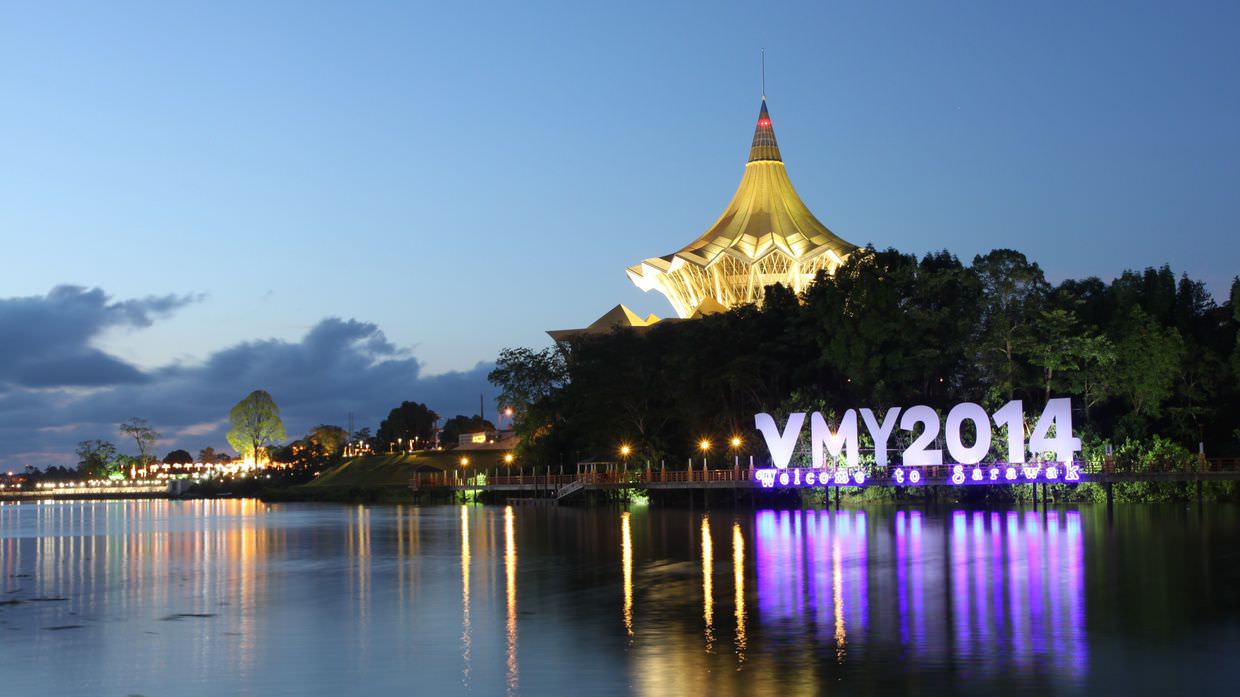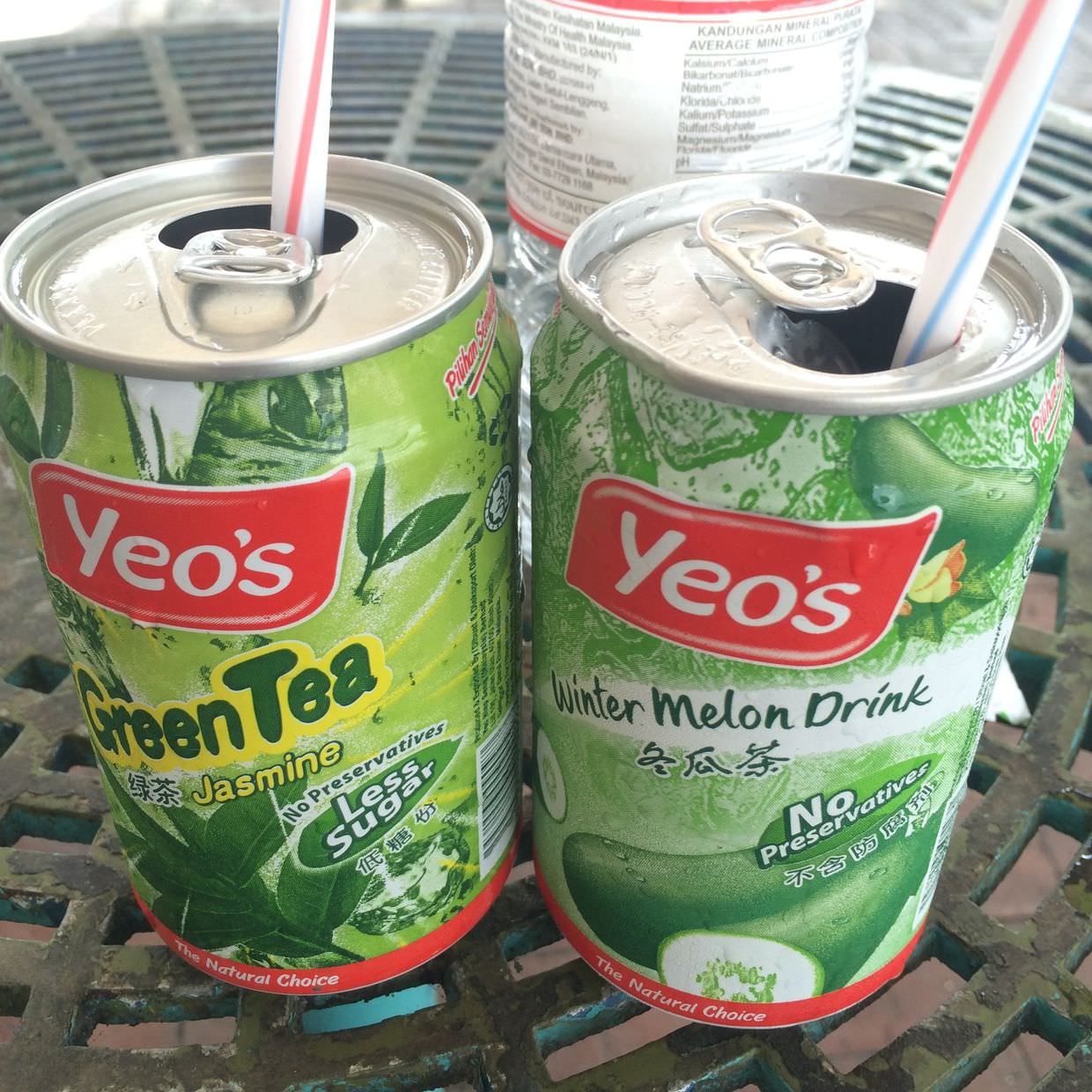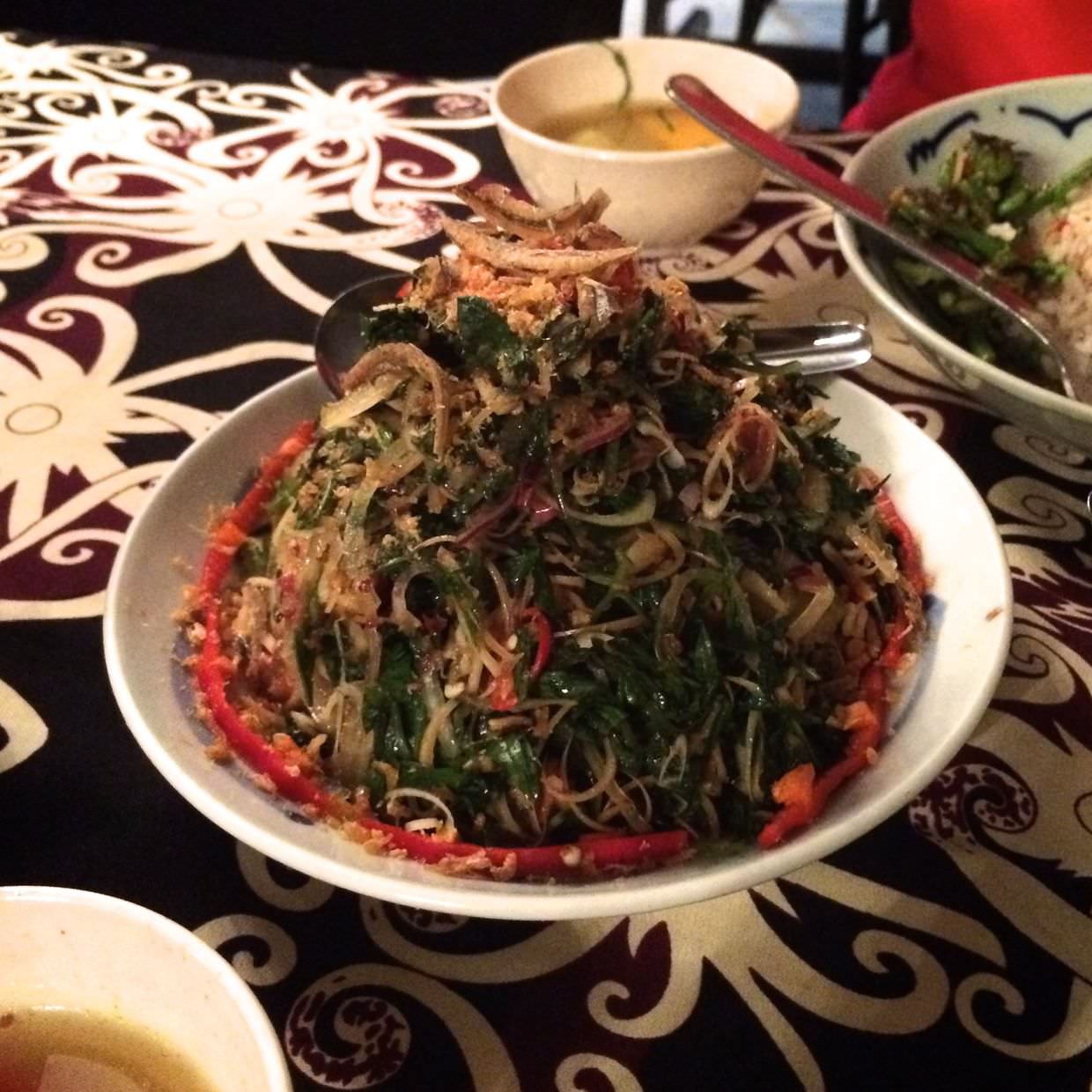Four nights at LimeTree hotel for exploring national parks
Kuching was the first of three stops in Borneo, a “sophisticated and chic city” surrounded with luscious natural parks, all within easy day-visit reach. We’d be in Kuching for four days, staying at the LimeTree hotel, highest rated on Trip Advisor. A white minibus picked us up from the airport, “Just two?” our driver asked. On the surface, and compared to Kuala Lumpur, the city is small, and beyond the golden crowned Sarawak State Assembly and pointed library, it looked like there wasn’t much to do. Equally, switching from five star business luxury to a modest but quirky and characterful hotel was a shock to the system. Nonetheless, we loved everything about this city and this hotel, and we could have stayed twice as long — there’s so many places to see and places to eat. It exudes a relaxed charm, not unlike Hoi An in Vietnam, or even Paraty in Brazil.

The LimeTree hotel
The LimeTree hotel takes a lime theme and runs with it, skips with it, hops with it, and then drop kicks it into some sort of lime shaped net. Everything is green; sofas, doors, pillows, toiletries. Drinks are served on green trays with felt green lining. The free welcome drink is a lime soda, made from homegrown limes. Cocktails all have a lime twist. Lime trees decorate the bar and foyer. Then there are the perfect lime puns, the downstairs restaurant named “Sublime”, the rooftop bar “Limelight”. The shop sells boiled lime sweets and aprons bearing the lyric, “I’ve had the lime of my life”. Juicy.
With so much to do we were diligent in our plans. Within an hour of arriving we’d booked the Bumbu cooking class for Thursday, met the cook (“chef” is a protected title) and paid our deposit. Tomorrow we’d visit Bako national park, and Friday we’d probably go to Kubah national park. The hotel offered tours through companies to these places, but they cost upwards of £50 each. Instead we organised a taxi pick-up and drop off, we’d do it ourselves for a fraction of the price.
Exploring Kuching
Settled, unpacked, and over the newly found crack on the camera’s screen (fixed with some sticky tape from reception), we ventured out into late-afternoon Kuching. From the hotel you can walk along the riverfront into town, it’s a pleasant 10 minute stroll if the sun isn’t trying to melt you. On the opposite riverbank is the prestigious Sarawak assembly, it looks gorgeous, though it’s not worth crossing the river to see inside. The air was filled with the sounds of bad karaoke coming from across the river.
From the waterfront promenade we found new chinatown and the main bazaar. T-shirts bore the Sarawak emblem of a hornbill bird, wrapped in a green Starbucks-esque circle. Shops overflow onto the paths, and there are many cultural craft shops and galleries, some with classic or antique carvings that are both mysterious and frightening. Little stalls on the roadside sell Kek Lapis, tasty layer cakes of all flavours, from chocolate to bright green pandan leaves — tastings are free and we must have bought at least four of these lovely treats. Though the canned “winter melon” and “green tea jasmine” soft drinks were so weird we only took two sips, then bought ice cream and more drinks to washout the flavour.

Traditional Dayak cuisine
For dinner we felt adventurous, looking for some authentic and radical local cuisine. Dyak seemed perfect, it specialises in traditional Dayak recipes — concoctions of flavours with fresh rainforest vegetables that are unheard of. Dayak is a collective term for the indigenous tribesfolk of Borneo. Photos of tribes and traditional tribal acts adorned the walls, alongside oil paintings and peculiar spiralling murals. We started by knocking back a shot of Tuak Indu each, a local fortified rice wine. We weren’t sure how much to order, but dishes were cheap, so we ended up with much more than we could eat but with a bit of everything we wanted.
The curly jungle ferns tasted odd, both fresh and pithy. Wild ginger flower is quite delicious.
